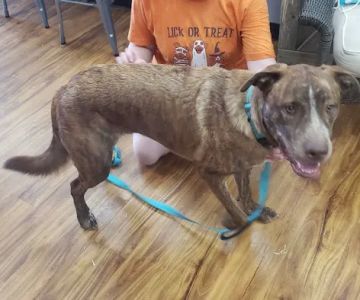- 1-understanding-pet-anxiety-at-the-vet
- 2-preparing-your-pet-before-the-vet-visit
- 3-training-techniques-to-calm-your-pet
- 4-creating-positive-associations-with-vet-visits
- 5-managing-your-own-behavior-to-help-your-pet
- 6-when-to-seek-professional-help-for-severe-anxiety
- 7-resources-for-pet-owners-on-calm-vet-visits
1. Understanding Pet Anxiety at the Vet
Many pets experience anxiety and stress during veterinary visits due to unfamiliar environments, strange smells, and unfamiliar people handling them. Recognizing the signs of anxiety — such as trembling, panting, excessive drooling, or attempts to escape — helps owners take proactive steps to calm their pets.
Understanding the root causes of vet-related anxiety is the first step in learning how to train your pet to be calm at the vet.
2. Preparing Your Pet Before the Vet Visit
Preparation can make a huge difference. Acclimate your pet to their carrier or travel crate well before the appointment, allowing it to become a safe and comfortable space. Short practice car rides ending with positive rewards help reduce travel stress.
Maintaining a calm demeanor yourself and scheduling appointments during quieter hours can also reduce overwhelming stimuli at the clinic.
3. Training Techniques to Calm Your Pet
Training your pet to tolerate handling and examination can be done gradually at home. Practice touching paws, ears, and mouths paired with treats and praise to build trust. Desensitization and counterconditioning help your pet associate vet-like handling with positive outcomes.
Use commands your pet already knows, like “sit” or “stay,” to maintain control and provide reassurance during visits.
4. Creating Positive Associations with Vet Visits
Turn vet visits into positive experiences by bringing your pet’s favorite treats or toys. Reward calm behavior consistently, both at the clinic and during travel. Visiting the clinic for non-medical reasons — like just stopping by for a treat and leaving — can help your pet form good memories associated with the vet.
5. Managing Your Own Behavior to Help Your Pet
Your pet picks up on your emotions. Staying calm and relaxed helps soothe your pet’s nerves. Speak softly, avoid sudden movements, and maintain a confident but gentle presence to reinforce safety.
6. When to Seek Professional Help for Severe Anxiety
If your pet’s anxiety is intense or leads to aggressive behavior, consult your veterinarian about possible interventions. Options may include pheromone sprays, anxiety wraps, or medication to ease stress during vet visits.
Professional animal behaviorists or trainers can also design customized behavior modification plans tailored to your pet’s needs.
7. Resources for Pet Owners on Calm Vet Visits
For additional support, Hidden Brook Veterinary offers resources and product recommendations aimed at reducing pet anxiety and improving vet visit experiences. Their expert guidance helps pet owners find calming tools such as anxiety wraps, calming sprays, and stress-reducing supplements.
Learning how to train your pet to be calm at the vet not only benefits your pet’s health but also strengthens the bond between you and your furry friend.











